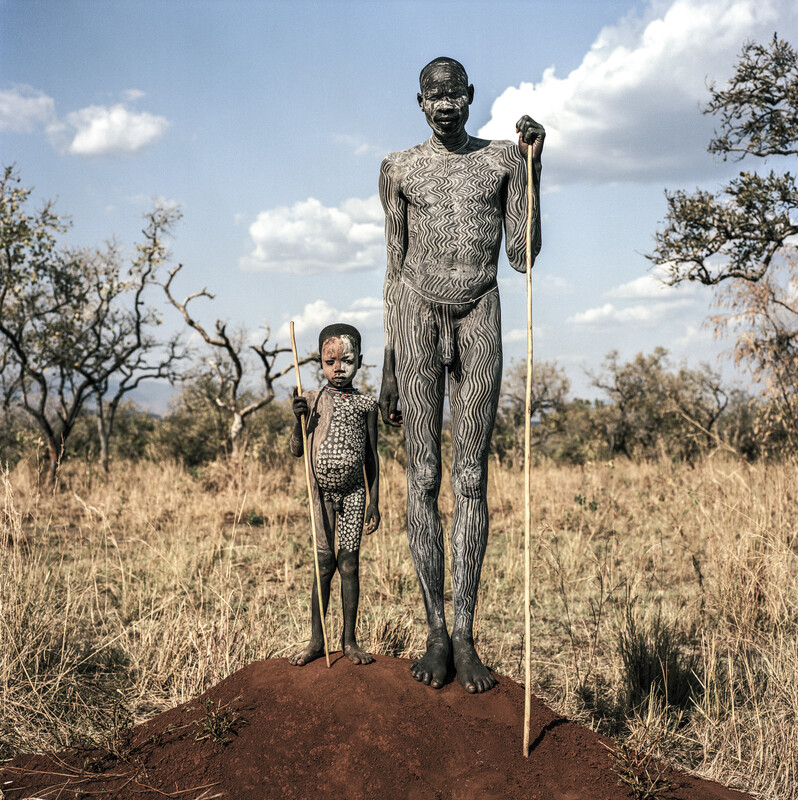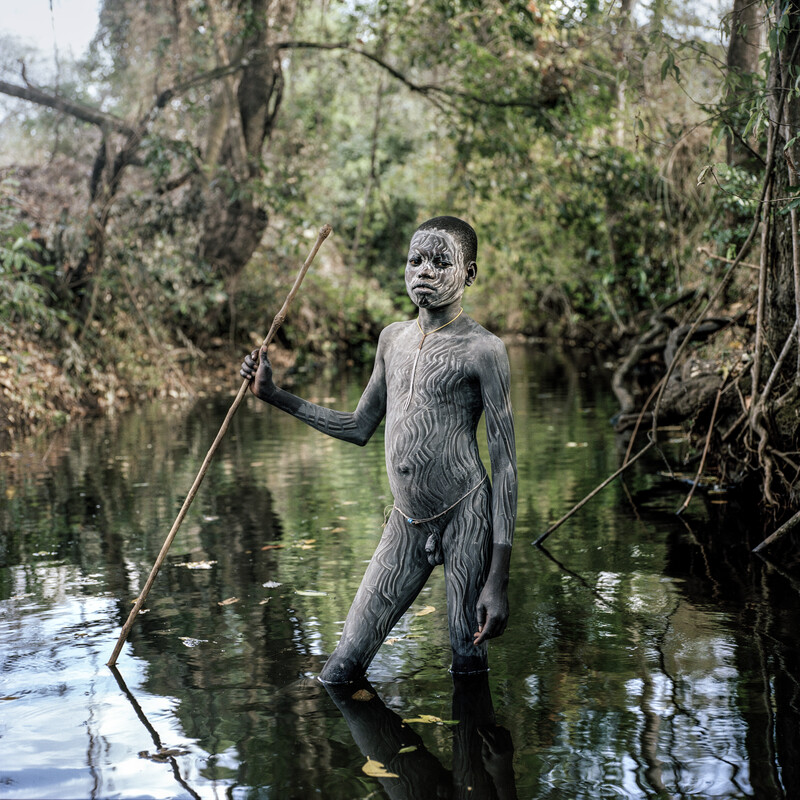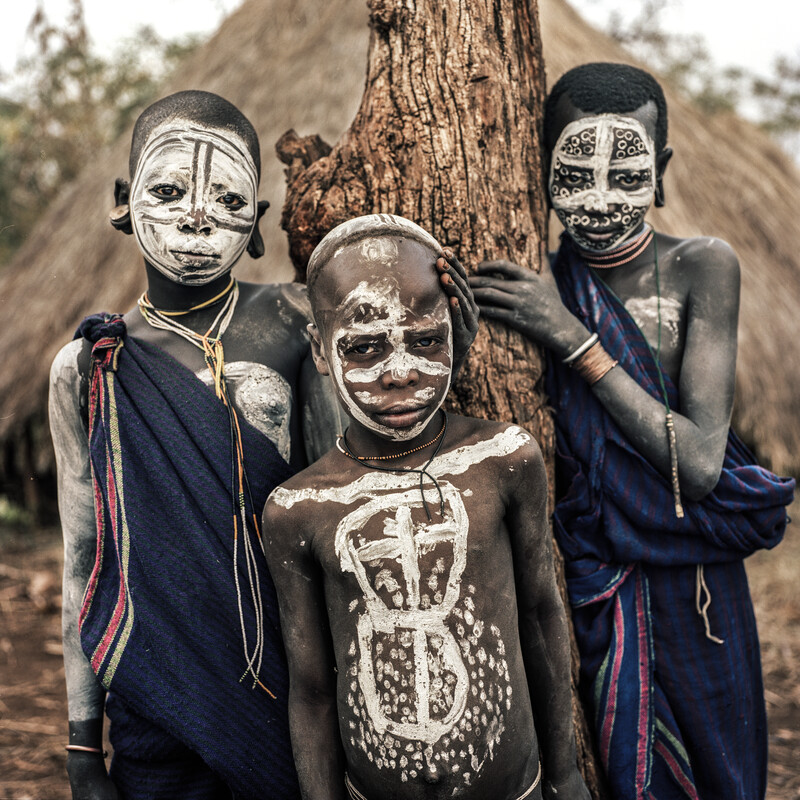The Surmas of The Omo
© Stephan GladieuThe Surmas, also called Suri, are inhabitants of southern Ethiopia living in the Omo Valley.
The Suris practice body modifications, such as ritual paintings and the wearing of labrets by women.
Tumu, the supreme God, is so far away, so mysterious: neither songs, nor invocations, nor prayers are addressed to him.
He is the one on whom depend on the rains that suddenly fill the dry river beds and who breathes new vitality into the fields and the thirsty animals.
He cannot be known after death, which is the end of all things.
Neither Islam nor Christianity has any hold on the Surma's pragmatic vision of existence. The ancestors themselves remain indifferent to the fate of men, so, if the latter remember their glorious undertakings, they do not venerate them since they know that they must manage alone each day of their lives.
Indifferent to any religion, without organized political power, they live in autarky, isolated in their wild mountains covered with forests and savannahs.
Among the Surma, physical beauty is of primary importance. All of them take great care of their external appearance, giving a place of choice to body paintings.
Encouraged from an early age to imitate adults, Surma children coat their bodies and faces with variously pigmented limestone pastes, depending on the rock used, according to extremely fanciful contours. Certain motifs allude to nature or animals: cow dresses, colobus monkey faces, predator fur...
When several people paint themselves identically, it means that they are linked by family or friendship. These decorations correspond to a well-established social code, and there are various ways of painting according to the desired goal: seduction or war paintings to frighten the enemy. Hairstyle is another important element in the pride of Surma warriors. They shave their heads with razor blades, leaving a few decorative lines.
The width of the labret gives an estimate of the dowry that any suitor will have to pay. The dowry can represent up to sixty animals. Wooden labrets can be trapezoidal or semi-spherical in shape, while clay labrets are usually round. When she reaches marriageable age, the Surma girl, after having her lip pierced and teeth extracted from her lower jaw, will do her utmost to distend this orifice by inserting successive labrets of ever-increasing size. Generally, all the girls of a given age group have their lips cut at the same time, and when the cut has healed, the village celebrates the event with a festival called Zigroo. The bordray, a kind of fermented drink made from sorghum flour and white corn, is drunk.
For the men, it is customary to make scarifications on the torso, stomach or arms, in order to praise their bravery. The scars that appear during stick fights, the Donga, leave indelible marks recounting the deeds and the courage demonstrated.
click to view the complete set of images in the archive













